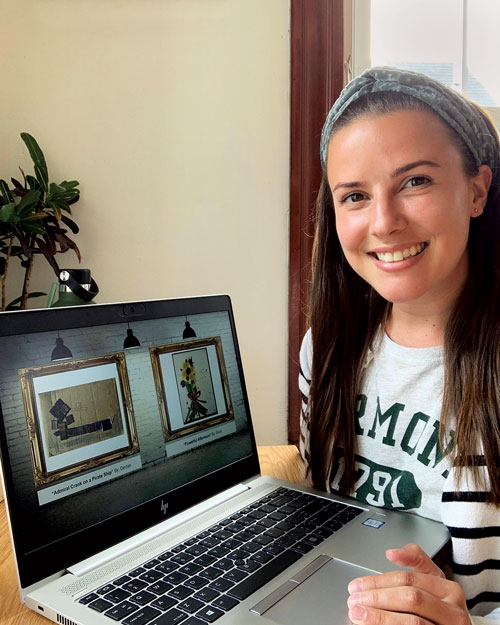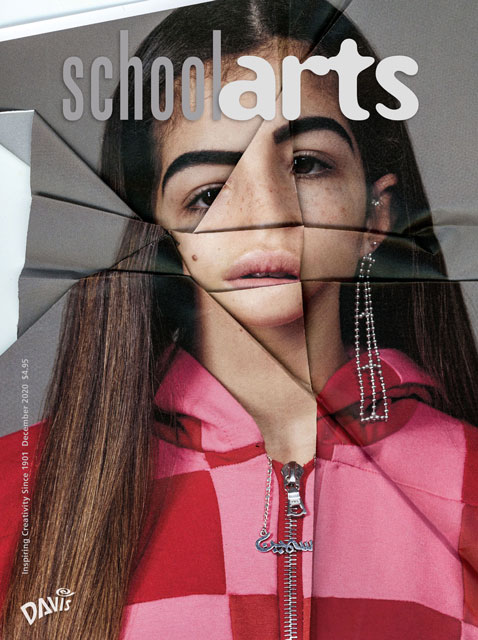 |
| Maureen Meyer prepares a slideshow for exhibition. |
Might proud parents link their child’s work and invite relatives to view the show, expanding the audience? There might also be advantages for art teachers, such as not having to hang the work.
Like anything new, we learn from our shared experiences. I’m going to share my experiences using three of the most popular free or low-cost formats for hosting virtual art shows.
Bulletin Board Apps
Online bulletin board applications, such as Padlet, are a great way to display information for any topic. You can add images, links, videos, and columns for sorting information. Most bulletin board apps are easy and very intuitive; I was up and running on Padlet in five minutes.
You can share a link with students and have them upload their own artwork. You can also moderate your app and review everything before it goes live. You can even share directly with students through your school’s online learning management system.
Most bulletin board apps accept a variety of file types. On Padlet, you can share videos of up to 10 MB directly or share a link to YouTube. This expands the idea of what might be included in an art show. (For example, a video of a student pulling a linoleum print could add a nice educational component to the show.)
Websites
Another option for a virtual art show is to create your own website. If you’re confident with your technical skills, it’s a solid choice. Wix, Weebly, and Google Sites are all examples of free platforms. If you don’t have experience in this realm, ask yourself how techsavvy you are and how much time you are willing to invest in learning.
Slideshows
My recommendation is to set up your art show as a slideshow (as opposed to a movie). This allows viewers to travel through the show at their own pace. Just like in a real art show you can pause at art that interests you and hurry past work that is less engaging to you. In a slideshow, parents can easily navigate to their child’s slide and link to it.
Many slideshow applications, such as Google Slides or Adobe Spark, are easy to set up. You can collaborate with students by asking them to drop images into shareable folders.
Best Practices
Any art show should include labels that are consistent in size and placement, using a readable font. Curate work for variety. If you have seniors, you might want their work to be presented differently than your underclassmen. Before sending your art show out to everyone, have a test audience of administration and technology staff view it and give feedback.
After you finish setting up your art show, sit back and enjoy the fact that you don’t have to take it down the next morning, or when the gym teacher needs the space back. It’s all yours.
Maureen Meyer is a former art teacher and department chair, having taught in public and private high schools for twenty years in Massachusetts. She now manages My Art Lesson (myartlesson.com), an online community for grades 5–12 art educators. maureenameyer@gmail.com
View this article in the digital edition.



